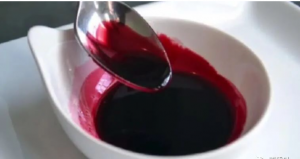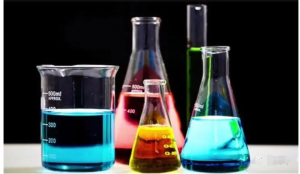What exactly are food additives? Are they safe? Is “0 additives” really better? What should we think about food additives?

01
What are food additives?
Food additives are synthetic or natural substances that are added to food in order to improve the quality, color, aroma and taste of food, as well as for the purpose of preservation, freshness and processing. Flavorings for food, base agent substances in gum-based candies, and processing aids for food industry are also included.
At present, there are about 2,000 kinds of food additives approved for use in China, and any substance not in the list of “Standard for the Use of Food Additives” (GB2760) is not a food additive.
Food additives are divided into 23 categories according to their functions, and the familiar ones are preservatives, bulking agents, spices (flavors), coloring agents (pigments) and so on. The previously mentioned “food processing aids” may not be familiar to you, but in fact, very commonly used, such as enzyme preparations belong to the processing aids.

02
The Dangers of Red Food Dyes
You wouldn’t believe the dangers of red food dye, but there are many.
When I was a kid, I loved red velvet cake. I hardly knew it was just food coloring and artificial flavoring. Red food dyes have been linked to some major health problems.
The food industry pumps 15 million pounds of food dye into our food supply. You may not have eaten anything with red food dyes, but your children may have.
Food dyes are in foods such as:
– Baked goods
– Candy
– pie fillings
– Cake frosting
– Cake mixes
– Fruit snacks
– Cereal
– Strawberry Filling
– Red soda
Potential symptoms of consuming red food dye:
-Hyperactivity.
-Allergies.
-Increased risk of cancer.
-Increased estrogen
-DNA damage
Exposure to pesticides, dyes and pollutants that mimic the growth-promoting effects of estrogen may cause breast cancer. The pesticide DDT and the food coloring Red No. 3 were found to increase the growth of HTB 133, but not of estrogen receptor (ER)-negative human breast cells (HTB 125) or rat liver epithelial cells (RLE).

Red #3, β-estradiol, and DDT increased ER site-specific DNA binding to estrogen-responsive elements in HTB 133 cells and increased cell cycle protein-dependent kinase 2 activity in MCF-7 breast cancer cells.
Treatment with Red #3 increased site-specific DNA binding to p53 in RLE, HTB 125, HTB 133, and MCF-7 cells, suggesting that cellular DNA is disrupted by this colorant. Red #3 increased binding of ER from MCF-7 cells to estrogen-responsive elements.
Consumption of Red #3, which has estrogen-like growth-stimulating properties and may be genotoxic, may be an important risk factor for human breast cancer carcinogenesis.
Are food additives safe or not?
The “Hexagon Technology” and “Technology and Tough Living” have made people worried about food additives, thinking that they are all unsafe.
In fact, all food additives are safe as long as they are used appropriately. There has never been a case of health damage caused by the rational use of food additives.
The term “reasonable use” should be emphasized here!
The so-called “rational use” refers to the use of food additives in accordance with the scope of use and the amount of use stipulated by national standards, and in accordance with the principles of food additive use.
We often see in the news media, the network of the endless violations of the law, in fact, are illegal to abuse, especially illegal additives to make food additives back a lot of blackmail. The “Hexagonal Technology”, “technology and hard work” exposure of many problems is also the essence of illegal abuse.
As long as the scope of use beyond the national standard, or exceed the national standard for the use of the amount (which is often referred to as excessive), or against the principle of the use of food additives (for example, the use of three flowers of light milk to fake lamb broth), are illegal and abusive use of food additives.
In addition, some substances are not food additives at all, but illegal additives, such as Sudan red, plasticizers, melamine, as long as the use is illegal; the use of industrial-grade products is the same, such as industrial gelatin in leather yogurt.
Many people are also worried that there are too many types of additives in food, a large row behind the ingredient list, so many kinds of cumulative will not be harmful? We often see “a food detected/contains more than a dozen additives” found that many media also said “long-term large intake will lead to XX serious consequences”.

In fact, there is no need to panic.
The safety evaluation of food additives has already taken into account the situation of lifelong, daily and large intake, and the so-called “long-term large amount” of food additives used in accordance with the standard does not exist, and generally does not cause harm.
For example, our national standards on the use of food additives have “limited” provisions, this limit is usually based on the safe dose of animals and then enlarged by 100 times, as long as we eat a normal diet, from the amount of health hazards caused by a great distance, after all, we can not be lifelong, every day to eat food exceeding the standard.
It should be emphasized that “not necessarily hazardous” does not mean that excessive behavior can be tolerated, not to mention that we should eat excessive food. Enterprises should always use food additives reasonably in accordance with national standards, and misuse of food additives and illegal additive behavior are illegal, whether or not they cause health hazards are illegal, and should be punished accordingly.
03
Is it safer to have 0 additives and no preservatives?
Many consumers will think that “no preservatives”, “zero-added” safer and better, some businesses take advantage of the opportunity to launch a lot of “no preservatives”, “Zero-additive”, and even “flavor-free”, “color-free” food, not only to meet the consumer’s psychology, but also to save the cost of additives, the key is to also sell a good The key is to sell a good price, for the enterprise is really why not.
Let’s talk about the “preservative-free” thing.
In fact, all national standards allow the use of preservatives have been evaluated for safety, standardized use will not bring harm to the health of consumers. The role of preservatives is to prevent food spoilage, otherwise some food before the factory is bad, and may even produce toxins.
For example, we buy sausages with preservatives – nitrite, its role is mainly to inhibit the growth and reproduction of Clostridium botulinum, and Clostridium botulinum may produce a highly toxic toxin – botulinum toxin during the growth process, the toxicity of which is stronger than arsenic. Therefore, the rational use of preservatives can actually make our food safer, or it can also be said the other way round, certain food products that should be reasonably using preservatives to ensure safety, but purposely do not use preservatives, may instead increase the risk.
Moreover, some “preservative-free” food is completely fooled, because they do not need to add preservatives, such as honey (high sugar), instant noodle cake (dry), pickled food (high salt), etc., itself is difficult for microbes to utilize the growth of these foods claiming that “preservatives-free These foods claiming “no preservatives” are purely marketing tactics.
As for “zero-additive” is even more unreliable.
On the one hand, it is difficult to find food products that do not use food additives at all in the modern food industry environment, at least the entire production process without the use of processing aids is almost impossible.
For example, even for pure brewing soy sauce, enzymes are usually used in the brewing process to improve fermentation efficiency and effectiveness, and enzymes are also managed as food additives.
At present, some domestic companies have developed special enzyme preparations for brewing soy sauce for the specific conditions of the brewing industry, and the common ones are fungal α-amylase, complex protease, cellulase, phytase, pectinase, etc. This is also a new track for the competition of these seasoning enterprises at present, because enzyme preparations can not only promote the decomposition of proteins and starch in the raw materials for the production of soy sauce and improve the utilization of raw materials, but also promote the formation of flavor substances , improve the flavor of soy sauce, is a direction of soy sauce innovation and research and development.
It is worth mentioning that Japanese food production enterprises are the first to develop in this direction. Currently, the use of this method is also very common in the Japanese soy sauce brewing industry.
Secondly, the standardized use of food additives itself is safe, “zero-added” will not be safer. Instead of promoting “preservative-free” and “zero-additive” products, companies may further discredit people’s perception of food additives – that they are all bad. bad.
The food additives “feast” on the network speculation “Hexa-technology”, “science and technology and hard work” is certainly a demonization of food additives, but in the “Demonization of food additives” in this regard, these publicity “zero-additive” “preservative-free” food companies are also “not to be faulted “. Even at this time, the relevant enterprises are still publicizing “zero-added” series products in their statements.
From the perspective of business operations, “0-added” products may mean a higher premium. But on the other hand, every publicity for such products may backfire on the producers and even the whole industry at a particular time.
04
How do we think about food additives?
For us, the rational use of food additives can actually enrich our food food choices, both to ensure our dietary safety and to satisfy our needs for taste or nutrition.
Let’s take the soy sauce in this incident as an example.
Traditional brewed soy sauce does not use preservatives, but basically salt is added, relying on the high osmotic pressure of salt to inhibit microorganisms. However, even with the addition of salt, the high osmotic pressure-resistant “soy linen fly” can still grow, so many people’s home soy sauce will also have insects after opening. With preservatives, however, we rarely have to worry about this, and it has also made it possible to develop soy sauce with reduced salt – after all, too much salt is bad for the cardiovascular system, and soy sauce is an important source of salt.
In addition, the traditional brewing of soy sauce is mainly fermented with varroa, but the fermentation is inefficient and the flavor is unstable. It was later discovered that the simultaneous use of enzymes could greatly improve the fermentation efficiency of soy sauce, and the flavor was also improved.
There are many more such examples. For example, in the past, foods such as cooking oil, sesame flowers and nuts often had a harrying flavor, but this is much less common now, because we have antioxidants; for example, emulsifiers and thickeners make ice cream taste smoother and creamier, adding to the enjoyment of the tastebuds ……
Translated with DeepL.com (free version)

